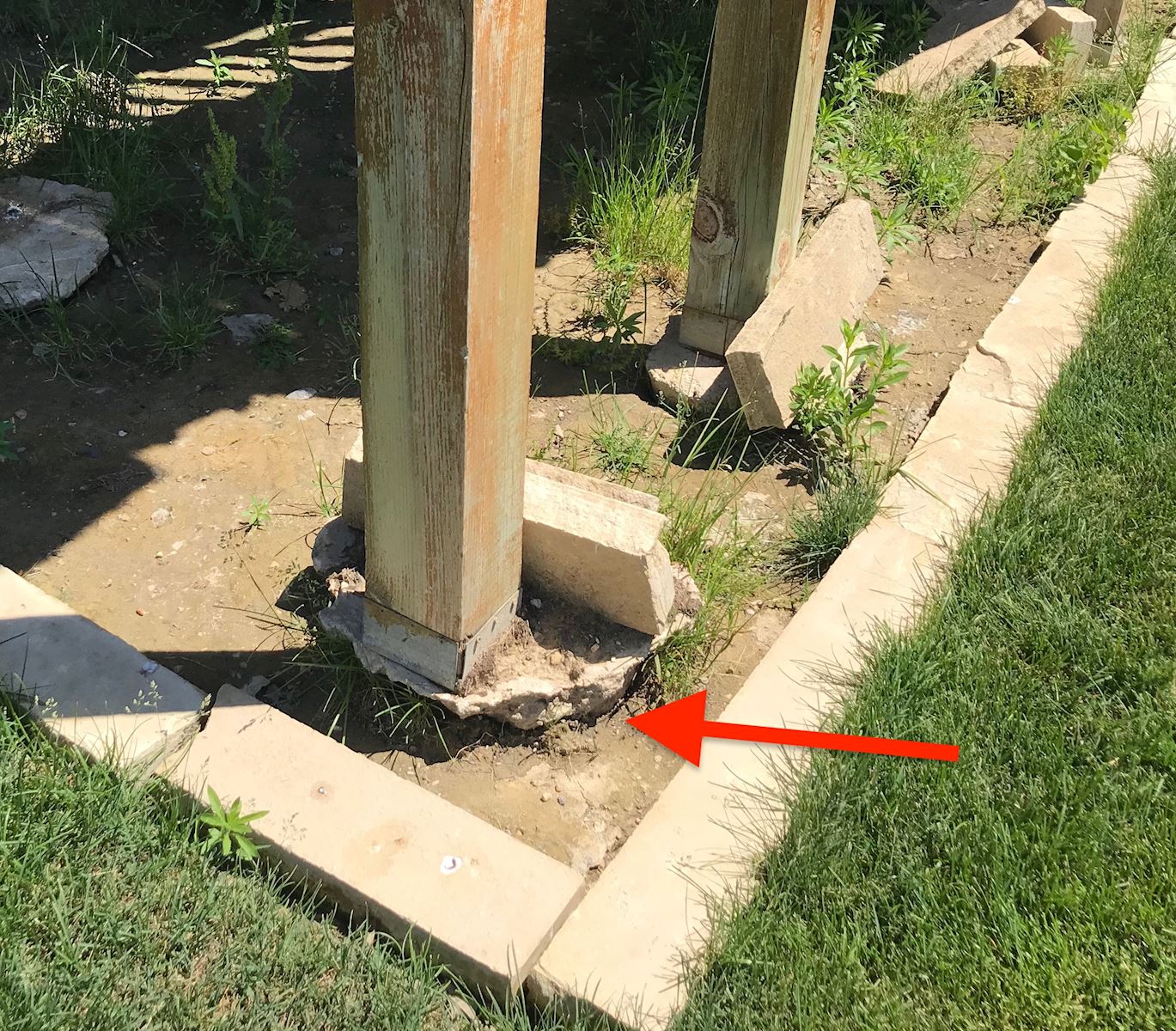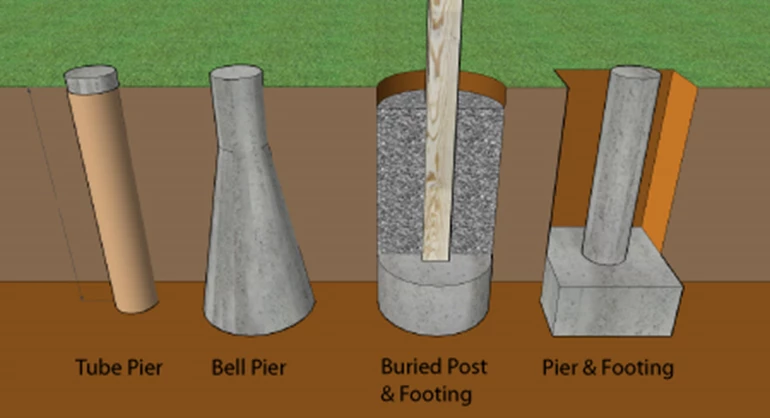Engineered for Success: The Science Behind Durable and Resilient Deck Footings
Engineered for Success: The Science Behind Durable and Resilient Deck Footings
Blog Article
Choosing the Right Deck Footings for Security and Sturdiness
When it concerns constructing a deck, one of one of the most essential decisions you will make is choosing the right grounds for security and resilience. The durability and safety and security of your deck depend heavily on the sort of grounds you choose, as they supply the crucial support and stability to endure the test of time. With a myriad of options offered, it can be overwhelming to determine which footings are best fit for your particular needs. In this discussion, we will explore the numerous sorts of deck grounds, think about the essential aspects to evaluate when making a decision, and dig into the benefits and drawbacks of different options. By the end, you will certainly have a more clear understanding of the selections at hand and be far better furnished to make a notified decision for your deck job.
Types of Deck Grounds
These grounds are composed of a round hole loaded with concrete, which gives a solid foundation for the deck messages. Concrete pier grounds are reasonably very easy to set up and provide superb security, making them a prominent selection for numerous deck tasks.
These footings are set up by screwing them into the ground, which develops a safe and secure structure for the deck. They additionally enable for easy modification and leveling of the deck if required.
Alternatively, some home builders choose precast concrete grounds. These footings are made from durable concrete and be available in different sizes and shapes to fit different deck layouts. Precast concrete footings are convenient to mount and supply a secure base for the deck framework.
Finally, one more alternative is the post-in-anchor ground system. This sort of ground involves driving a steel support into the ground and affixing it to the deck message. It provides adaptability in regards to placing the deck messages and is ideal for decks with lightweight frameworks.
When choosing the ideal sort of deck ground, it is important to think about aspects such as dirt conditions, deck lots, and local building regulations (Deck Footings). Consulting with a specialist service provider or structural engineer can assist guarantee the ideal ground is selected for a risk-free and secure deck
Elements to Take Into Consideration When Picking Footings
When selecting the suitable footings for a deck, it is essential to meticulously take into consideration different aspects such as soil problems, deck load, and adherence to neighborhood building ordinance. These elements play a substantial role in making sure the security and resilience of the deck structure.
The kind of soil on which the deck will be built establishes the kind of grounds needed. On the other hand, decks developed on clay or expansive soils might call for grounds that can fit the dirt's propensity to expand and agreement.
An additional essential factor is the deck tons. The weight of the deck, consisting of the materials used and any prospective live tons such as furniture or events, have to be considered when choosing footings. The grounds should be developed to bear the weight of the deck and disperse it evenly to stop any type of structural concerns or failings.
Lastly, adherence to local structure codes is vital. Structure codes differ from area to area, and it is vital to comply with the particular requirements set by the local authorities. Deck Footings. These codes make sure that the deck is developed securely and satisfies the necessary requirements for structural integrity and load-bearing capability
Concrete Footings: Advantages And Disadvantages

Concrete grounds supply several benefits and click this site negative aspects when utilized as the foundation for a deck. On the favorable side, concrete grounds give excellent security and durability.
One more advantage of concrete footings is their flexibility. They can be put right into various shapes and dimensions to suit different deck layouts and arrangements. Concrete grounds can be tailored to fit the certain demands and requirements of the deck framework.
Nonetheless, there are additionally some downsides to making use of concrete grounds. One significant downside is the expense and labor entailed in their installment. Concrete grounds call for excavation and usually require the assistance of hefty equipment. This can boost the general cost of the deck task and may require professional assistance.

Helical Piers Vs. Sonotubes: Which Is Much better?
In considering the foundation choices for a deck, the comparison between helical piers and sonotubes is critical in determining the premium choice. They are turned into the ground making use of hydraulic machinery, giving a sturdy and steady foundation for the deck.
The helical plates on the piers produce a solid hold with the soil, avoiding any kind of movement or changing of the deck. Sonotubes, on the other hand, count only on the concrete loading for stability, which might not offer the exact same level of toughness and resistance.
In regards to installment, helical piers are reasonably much easier and faster to install contrasted to sonotubes. The hydraulic equipment utilized to turn the piers into the ground makes sure a efficient and fast procedure. Sonotubes, on the various other hand, call for digging holes and pouring concrete, which can be labor-intensive and lengthy.
Additionally, helical piers are an even more functional choice. If needed, they can be used in different dirt problems and can be readjusted or strengthened. Sonotubes, on the other hand, may call for added assistance, such as rebar, in specific soil problems or areas with high lots demands.
Picking the Right Footings for Your Deck's Measurements
For optimum structural integrity, it is necessary to meticulously choose the appropriate footings that align with the dimensions of your deck. The click here for more info measurements of your deck, including its size, size, and height, play a substantial role in figuring out the type and size of grounds called for.
When picking grounds for your deck, it is very important to consider the load-bearing capability of the soil. The weight of the deck, combined with the weight of any furnishings or individuals on it, exerts a substantial pressure on the grounds (Deck Footings). It is vital to pick grounds that can appropriately sustain this weight without changing or sinking over time.
The size and form of the grounds ought to likewise be considered. Larger decks with better dimensions require larger grounds to provide adequate stability and assistance. The form of the footings, whether they are square or round, relies on the style and design of the deck. In addition, the deepness at which the footings are set up should be identified based on the frost line in your area to avoid any type of heaving or moving because of freezing temperatures.
Conclusion
In verdict, picking the right deck footings is vital for guaranteeing stability and toughness. Aspects such as the type of grounds, the deck's dimensions, and the pros and disadvantages of different options need to be taken into consideration.
These footings consist of a round opening filled up with concrete, which offers a strong structure for the deck messages. Concrete pier footings are reasonably simple to mount and supply outstanding stability, making them a popular option for many deck tasks.
Precast concrete footings are more helpful hints convenient to mount and offer a steady base for the deck framework.
It uses versatility in terms of placing the deck articles and is ideal for decks with light-weight structures.
Concrete grounds supply numerous advantages and drawbacks when utilized as the structure for a deck.
Report this page